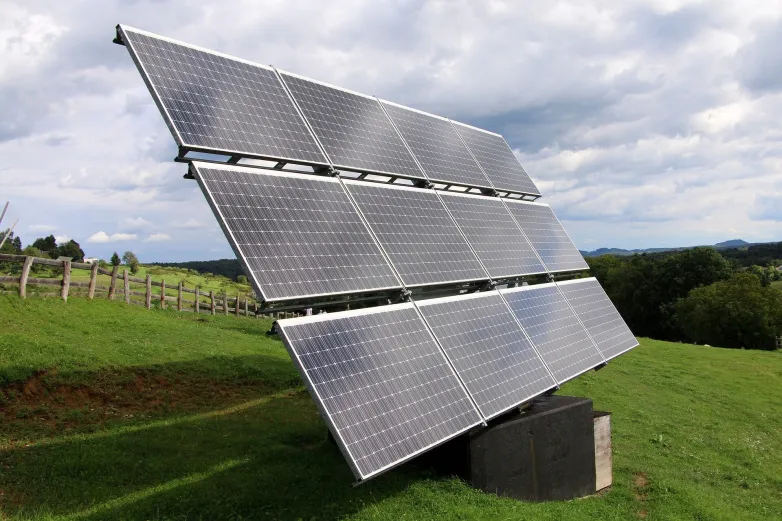New electrolyte enables high efficiency of secure, sustainable zinc batteries
- Scientists led by an Oregon State University scientist have developed a new electrolyte that elevates the efficiency of the zinc metal anode in zinc batteries to almost 100%, an innovation on the way to an alternative to lithium-ion batteries for large-scale energy storage.

The research is part of an ongoing global quest for new battery chemistries able to store renewable solar and wind energy on the electric grid for use when the sun isn't shining and the wind isn't blowing.
Xiulei "David" Ji of the OSU College of Science and a collaboration that included HP Inc. and GROTTHUSS INC., an Oregon State spinout company, reported their findings in Nature Sustainability.
" The breakthrough represents a significant advancement toward making zinc metal batteries more accessible to consumers," Ji said. "These batteries are essential for the installation of additional solar and wind farms. In addition, they offer a secure and efficient solution for home energy storage, as well as energy storage modules for communities that are vulnerable to natural disasters."
A battery stores electricity in the form of chemical energy and through reactions converts it to electrical energy. There are many different types of batteries, but most of them work the same basic way and contain the same basic components.
Every battery has two electrodes-- the anode, from which electrons flow out into an external circuit, and the cathode, which acquires electrons from the external circuit-- and the electrolyte, the chemical medium that separates the electrodes and allows the flow of ions between them.
Relying on a metal that's safe and abundant, zinc-based batteries are energy dense and seen as a possible alternative for grid energy storage to widely used lithium-ion batteries, whose production relies on shrinking supplies of rare metals such as cobalt and nickel. Cobalt and nickel are also toxic and can contaminate ecosystems and water sources if they leach out of landfills.
Additionally, electrolytes in lithium-ion batteries are commonly dissolved in flammable organic solvents that often decompose at high operation voltages. Other safety concerns include dendrites, which resemble tiny trees growing inside a battery. They can pierce the separator like thistles growing through cracks in a driveway, leading to unwanted and sometimes unsafe chemical reactions.
" Zinc metal batteries are one of the leading candidate technologies for large-scale energy storage," Ji said. "Our new hybrid electrolyte uses water and an ordinary battery solvent, which is non-flammable, cost-effective and of low environmental impact. The electrolyte is made of a dissolved mixture of inexpensive chloride salts, with the primary one being zinc chloride."
The cost of electricity delivered by a storage facility consisting of zinc batteries can only be competitive with fossil-fuel-produced electricity if the battery has a long cycle life of thousands of cycles, Ji said. To date, however, cycle life has been limited by the poor reversibility performance of the zinc anode.
During charging, Ji explains, zinc cations in the electrolyte gain electrons and get plated on the anode surface. During discharge, the plated anode gives up electrons for the workload by being dissolved into the electrolyte.
" This zinc plating and dissolution process is often woefully irreversible," Ji said. "Namely, some electrons used in plating can not be recouped during discharge. This is a problem in an area known as Coulombic efficiency."
Coulombic efficiency, or CE, is a measure of how well electrons are transferred in batteries, the ratio of the total charge extracted from the battery to the charge put in the over a full cycle. Lithium-ion batteries can have a CE in excess of 99%.
The new electrolyte developed by Ji and collaborators including scientists at Massachusetts Institute of Technology, Penn State and the University of California, Riverside, enabled a CE of 99.95%.
" The primary challenge with zinc batteries is that zinc reacts with water in the electrolyte to generate hydrogen gas in what is called a hydrogen evolution reaction," Ji said. "This parasitic reaction causes a short cycle life and is also a potential safety hazard."
The new electrolyte, however, restricts water's reactivity and nearly shuts down the hydrogen evolution reaction by forming a "passivation layer" on the surface of the anode. A similar passivation layer is what enabled the initial commercialization of lithium-ion batteries in the 1990s.
Ji credits OSU chemistry colleague Chong Fang for uncovering the electrolyte's atomic structure by using femtosecond Raman spectroscopy and Alex Greaney at UC Riverside for determining the passivation mechanism.
" Also, it is worth noting that the efficiency we measured is under harsh conditions that do not mask any damage caused by the hydrogen evolution reaction," Ji added. "The breakthrough reported here heralds the near-future commercialization of the zinc metal batteries for large-scale grid storage."
